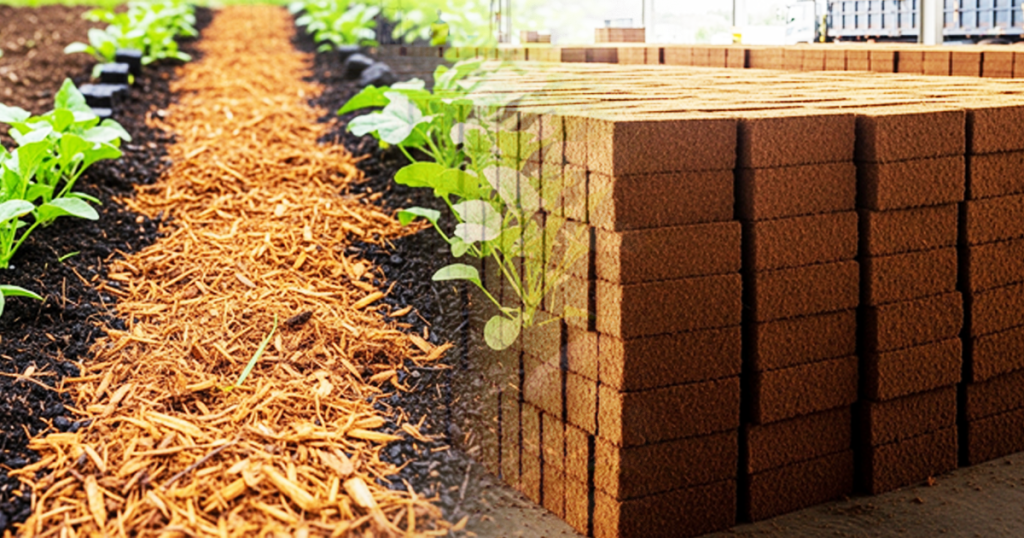Understanding the Global Cocopeat Market
Cocopeat powder, a byproduct of coconut husk processing, has evolved into a high-demand commodity. Its exceptional water retention capacity and eco-friendly nature make it a favorite in agriculture and horticulture. As sustainable farming trends grow, so does the urgency to evaluate the global cocopeat supply chain’s resilience and potential.
Key producers such as India, Sri Lanka, Indonesia, and the Philippines dominate global exports. These countries leverage coconut farming by repurposing waste into valuable substrate material. However, the international demand outpaces regional processing capacity, resulting in logistical bottlenecks and quality control inconsistencies.
The growing market for soilless cultivation media, hydroponics, and organic farming practices indicates long-term demand stability. But achieving supply chain optimization requires a multi-stakeholder approach, embracing innovation and strategic investment in infrastructure and standardization.
Opportunities in the Cocopeat Powder Ecosystem
Expanding Agricultural Applications
The rise of urban farming, greenhouse operations, and precision agriculture creates fertile ground for cocopeat usage. Its structure enhances aeration and root growth, improving plant health in controlled environments. The powder form, in particular, is favored for seed germination and nursery setups.
Countries with limited arable soil benefit significantly from cocopeat-based substrates. By importing this renewable growing medium, they reduce dependency on peat moss or synthetic alternatives. This opens avenues for exporters to diversify target markets beyond traditional agriculture sectors.
There’s also strong potential in landscaping, mushroom cultivation, and biocomposite manufacturing. Such diversification reduces risks associated with overreliance on a single market and strengthens cocopeat’s position as a multipurpose organic resource.
Technological Integration in Processing
Emerging technologies promise to modernize cocopeat powder production, boosting quality and consistency. Mechanical drying and sieving systems improve texture uniformity, which is vital for commercial horticulture. Automated packaging lines enhance efficiency and shelf-life.
Blockchain and digital traceability tools are gaining traction in supply chain monitoring. These tools assure buyers of product origin, processing standards, and environmental impact essential in markets with strict import regulations. This transparency also increases trust in suppliers and can unlock premium pricing.
Moreover, AI-powered logistics platforms help optimize export routes, minimize delivery times, and predict demand trends. By reducing human error and enhancing responsiveness, they elevate the supply chain’s competitiveness.
Key Challenges in the Cocopeat Powder Supply Chain
Raw Material Inconsistency and Seasonal Supply
Despite abundant coconut production, the quality of cocopeat powder often varies between batches. Factors like coconut maturity, husk moisture, and local drying practices influence powder consistency. This poses risks for bulk buyers needing standardized media for automation in nurseries or farms.
Additionally, the supply is heavily seasonal, influenced by regional harvest cycles and monsoon rains. The inconsistency restricts year-round availability, leading to order delays or inflated costs during off-seasons. Addressing this requires investment in storage facilities and coordinated harvesting strategies.
The lack of organized coconut waste collection systems in some producing countries further hampers raw material availability. Without structured upstream management, processors face unpredictable feedstock inputs, limiting output stability.
Trade Barriers and Quality Certification
Exporters frequently encounter non-tariff barriers such as phytosanitary requirements and custom delays. Countries like the U.S. and those in the EU demand certified low-salinity cocopeat with documented treatment processes. Small-scale producers often struggle to meet these standards without technical support.
Inconsistent international grading systems further complicate trade. While one country accepts a certain dust-to-fiber ratio, another might reject it outright. This lack of harmonization frustrates exporters and discourages market expansion efforts.
Furthermore, the absence of unified labeling and testing protocols leads to buyer skepticism. Certification schemes tailored for cocopeat, akin to organic or fair-trade models, are urgently needed to enhance global trust and facilitate smoother transactions.








